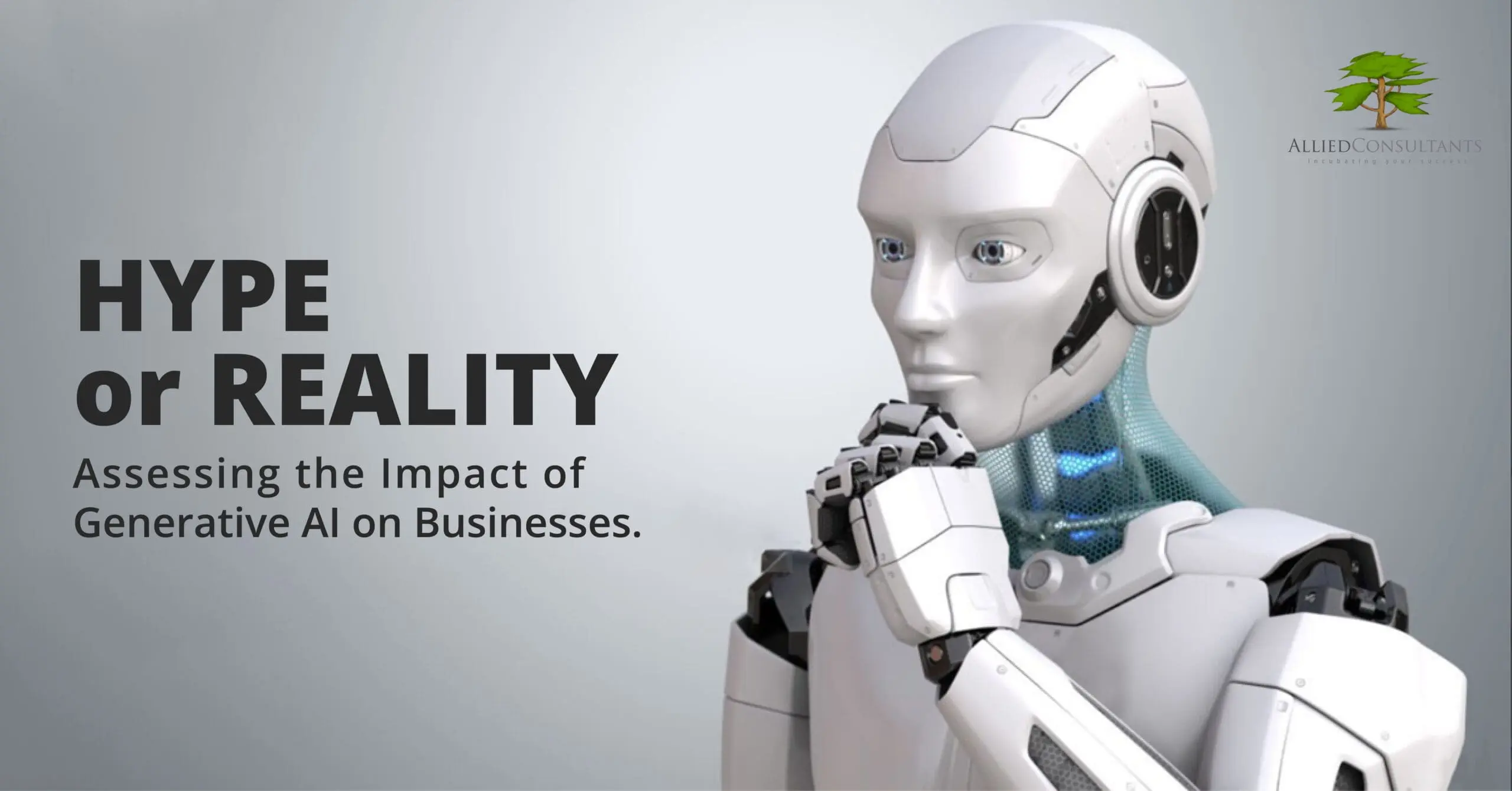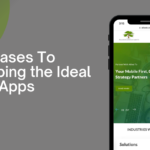Hype or Reality: Assessing the Impact of Generative AI on Businesses
The field of generative AI is quite complex, with numerous players joining in to leverage the latest innovation. Many enterprises view generative AI as the ultimate problem-solver and are beginning to adopt the technology to address common pain points. This is partly due to artificial intelligence’s (AI) impact on productivity, estimated to be worth trillions of dollars. However, concerns still need to be made about whether this perception is based on reality or simply hype.
Also Read This: Why Every Business Needs A successful AI Strategy?
It’s interesting to hear that executives across all industries are now interested in exploring the potential benefits of generative AI beyond the initial buzzwords and hype. It’s great to see that they are looking for ways to apply it to their organizational challenges and gain a competitive advantage. As generative AI is still a relatively new technology, it’s understandable that they are exploring initial use cases and considering strategies to reduce risk. It’s essential to take the time to understand how generative AI can help in successful business transformation.
Common Use Cases Of Generative AI
Before diving into further discussion, it’s pertinent to discuss the most common uses of generative AI technology by enterprises to develop the following directions:
Sales: As a sales professional, generating sales call transcripts, follow-ups, and styling content of pitch materials to fit the needs of a new customer segment can be quite time-consuming. However, one solution that can help alleviate these repetitive tasks is generative AI. By utilizing generative AI, sales teams can streamline their workflow and focus on more critical tasks that require their attention. This technology can significantly reduce the time and effort needed for these tasks, ultimately leading to a more efficient and productive sales process.
Customer support: AI-powered platforms have proven to be incredibly valuable support assistants. They can interact with customers, process their requests, gather feedback, and provide enterprises with valuable data for personalizing the client experience. This has made them an indispensable tool for businesses looking to improve customer service and better understand their clients’ needs.

Marketing: As a marketer, I’ve found that AI-powered tools can be beneficial for accelerating and optimizing content generation. They can assist in creating outbound email copies, building brand-consistent newsletters, and even crafting engaging blog posts. The speed and efficiency with which these tools work are awe-inspiring, and I’m excited to see how they’ll continue to evolve and improve.
HR automation: It’s incredible to see how generative AI can be used for many different purposes, including employee well-being check-ups and automating organizational processes such as scheduling time off and gathering feedback. It’s exciting to think about how much more efficient and effective these processes can become with the help of AI technology.
Research and documentation: Generative AI proves valuable in organizing documents, addressing legal inquiries, ensuring compliance, and fostering a safer and more controlled environment for businesses. Examining these primary applications, a clear trend emerges wherein AI efficiently handles routine tasks, potentially impacting 60%-70% of employee working hours. It accelerates vital enterprise functions like accounting and knowledge collection while boosting the creation of customer engagement content, spanning from marketing to sales efforts. Now, let’s explore how businesses implement these applications.

Generative AI For Enterprises: Deployment Models
As identified by Gartner, three main generative AI deployment models are currently used by enterprises. These models include out-of-the-box foundational models, prompt engineering, and custom models. Let’s explore each of these models in more detail.
1. Foundational Model
The Foundational Model is one of enterprises’ most popular deployment models for generative AI. This model involves businesses using existing generative AI services like ChatGPT or Bard to achieve their goals and solve tasks. It provides ample opportunities for experimenting with AI capabilities and allows employees to gain experience in interacting with AI-powered services.
However, this model has limitations, particularly in control and versatility. Companies often find that the service’s features are not adequately tuned to their specific requirements when they want to provide a more in-depth and customizable approach. Additionally, with some platforms pushing back against AI-generated content, it has become increasingly apparent that exclusivity and flexibility are necessary when optimizing content generation.
2. Prompt Engineering
Expanding the boundaries of the basic AI model is the next logical stage for companies. Companies can achieve more precise outcomes using prompt input and output customization tools within a foundational AI model. This personalized approach can help businesses achieve their goals and vision more effectively by allowing customized data input. According to Gartner, this approach is also cost-effective, making it an attractive option for startups and small businesses.

However, creating a customized AI model is more complex than using an off-the-shelf solution. Customization requires tuning to business systems before delivering results, highlighting the need for in-house AI engineers or tech partners’ assistance.
3. Custom Model
Many businesses want to unlock the full potential of generative AI and turn it into leverage. However, transitioning from the current state to the ideal state requires custom models tailored to the company’s needs, goals, and data. While there are only a few examples of such models in the business environment, apart from Google and Microsoft Copilot, it’s worth investing in licensed large language models (LLM)–based tools. Switching to custom models requires a significant amount of budget, time, and human resources, but it’s necessary for businesses that want to take full advantage of generative AI.
As a result, enterprises can implement a more personalized approach to all the directions in which generative AI can be applied, from marketing to sales to HR automation and data analytics.
Based on my professional experience, I’ve observed that internal data management issues such as legacy documentation and navigating through multiple information sources pose a significant risk to the success of at least nine out of ten business process transformation plans. However, LLM-powered systems can help alleviate most of these issues by thoroughly analyzing documents, including paper invoices, digital tax reports, and images.
These systems also enable interaction between multiple enterprise documents by storing data in vector format and categorizing it via embedding, which are transformed data bits representing a text group through a semantically connected keyword. The result is a more personalized approach to various areas where generative AI can be applied, ranging from marketing and sales to HR automation and data analytics.
Only As Efficient As It’s Taught To Be
Generative AI isn’t a cure-all. It’s not a thinking machine; it works based on its approach and the data quality. However, it can tackle problems with teaching and training, providing unique benefits for any business looking to move beyond basic models.
Companies seek to boost their operations with tailored solutions as businesses embrace digital tools and the AI market grows. This means basic models might no longer be enough, and instead, companies may turn to generative AI products designed to fit their specific needs, business goals, and employee requirements as part of a broader enterprise AI strategy.
Companies must focus on their long-term goals and challenges to make this shift and be prepared for a significant technological upgrade.


![[New Post] Answer these 14 Questions to become a Great Marketer](https://alliedc.com/wp-content/plugins/wordpress-23-related-posts-plugin/static/thumbs/4.jpg)




